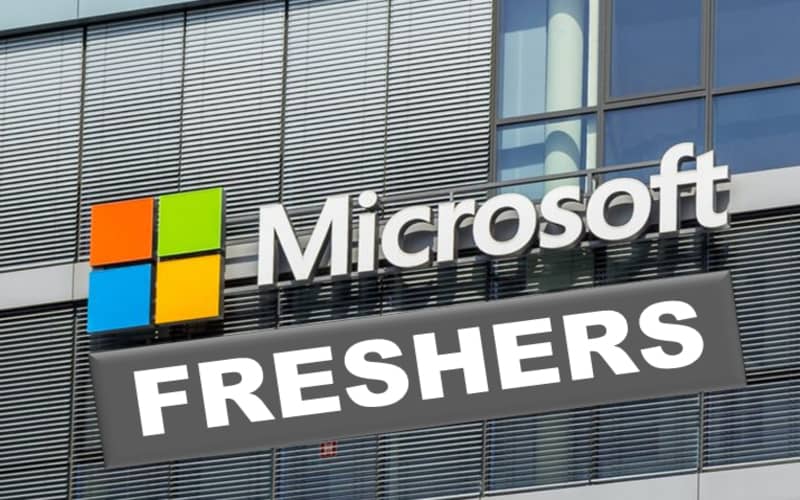Microsoft Azure Storage is hiring embedded software engineers. Early‑career roles in device drivers & cloud services. Apply now for 2025 skilled software devs!
🚀 Launch Your Career as an Embedded Software Engineer – Microsoft & Top Tech Companies Are Hiring
If you’re an early-career engineer looking to break into embedded software engineering or device driver development, Microsoft and other leading tech giants are opening doors right now. This post dives deep into one exciting opportunity: the Azure Storage Embedded Software Engineer role at Microsoft, while also providing pro tips to help you find and secure similar embedded or systems-level software roles elsewhere.
🔍 Why This Role Matters — Embedded + Cloud = Career Power Move
-
Unique Niche with High Demand: Embedded software engineers are in high demand as devices become smarter and more interconnected. Combine this with cloud-scale storage and you’re working at the cutting edge.
-
Cross‑Disciplinary Exposure: You’ll gain experience in systems design, Linux kernels, device drivers, cloud APIs, and hardware interfaces like DPU accelerators.
-
Scalable Impact: Your code won’t just touch one device—it may support hundreds of thousands of servers powering global services.
🧩 Microsoft Opportunity: Embedded Software Engineer – Azure Storage
📍 Locations
Multiple offices across the United States and select global locations.
🛠️ Role Summary
-
Design, implement, test, and maintain embedded software and device drivers for DPU-accelerated block storage.
-
Work across the full SDLC — from gathering requirements to supported deployment and monitoring.
-
Partner with cross-functional teams in hardware, firmware, system architecture, and DevOps.
🔑 Key Responsibilities
-
Collaborate with stakeholders to gather technical requirements.
-
Help architect and write embedded code in C, C++, or C#, depending on hardware environments.
-
Support driver lifecycle—from initialization through fault handling and performance monitoring.
-
Respond to performance issues, outages, and operational concerns—becoming a Designated Responsible Individual (DRI) for select services.
-
Advocate for high performance, reliability, and observability standards across embedded and cloud environments.
🎓 Qualifications – Required
-
Bachelor’s degree in CS or related field – or equivalent experience.
-
Strong programming skills in C/C++, with added value for C#, Java, Python, or JavaScript.
-
Demonstrated experience with embedded systems, real-time OS, or device driver code.
-
Security clearance is a requirement for those handling sensitive infrastructure operations.
🔒 Additional Requirements
-
Must pass Microsoft’s Cloud Background Check, repeated biennially.
-
Eligible to meet Microsoft corporate/local security screenings where applicable.
🔧 How to Stand Out in Your Application – Expert Pro Tips
-
Highlight Embedded Systems Projects
-
Showcase university labs or research projects involving UART, SPI, I2C, or RTOS.
-
If you built simulated device drivers or worked on kernel modules, list it in detail.
-
-
Quantify Your Code Contributions
-
“Developed a UART driver reducing interrupt latency by 30%.”
-
Use data to illustrate your skills in low-level programming and optimization.
-
-
Demonstrate Passion for Cloud Infrastructure
-
Read about DPU-accelerated storage or containerized hardware workloads.
-
Mention relevant blogs, GitHub repos, or personal projects where you explore cloud–hardware interfaces.
-
-
Be a DRI Minded Developer
-
Even as a student, show responsibility: uptime dashboards, exception alerts, or logs you’ve built.
-
Emphasizing reliability is critical in high-scale embedded roles.
-
-
Prep for C++ and Systems Interviews
-
Practice data structures, multithreading, and memory-management questions in C/C++.
-
Explore systems design concepts like caching, concurrency, and performance profiling.
-
🎓 Broader Early-Career Embedded Roles to Explore
If Azure Storage isn’t the exact right fit, consider:
1. “Device Driver Engineer – Linux Kernel”
Large enterprises and open-source heavyweights like Red Hat, Canonical, Siemens, and NVIDIA are always hiring embedded staff.
2. “Firmware Engineer – IoT Devices”
Consumer, industrial, and automotive companies value engineers who build firmware on ARM, MIPS, or RISC-V MCUs.
3. “Real-Time Systems Engineer”
Organizations working in medical, aerospace, defense, or industrial automation often offer high-impact roles for early-career professionals.
4. “DPU / FPGA Systems Engineer”
As data-center hardware evolves, embedded expertise in hardware offloading becomes rare and valuable.
🧭 Sample Application Roadmap
| Step | Action |
|---|---|
| 1 | Resume: Emphasize embedded and systems-level skills (IPMI, NVMe, etc.). |
| 2 | Cover Letter: Mention your desire to work on cloud-scale storage embedded systems. |
| 3 | GitHub or Projects URL: Include links to drivers, RTOS projects, or hardware-software integration tests. |
| 4 | Online Presence: Show profiles on LinkedIn, Stack Overflow, or contributions to embedded open-source projects. |
| 5 | Interview Prep: Use resources like “Linux Device Drivers by Jonathan Corbet”, LeetCode, and embedded OS forums. |
🏆 Career Growth: Where Embedded Skills Can Take You
-
Senior Embedded or Firmware Engineer
-
Lead development for new device families, hardware abstraction layers, or protocol stacks.
-
-
Systems Software Architect
-
Design and oversee scaling distributed hardware platforms and storage stacks.
-
-
Technical Program Manager (TPM)
-
Bridge hardware, software, and cloud across product lines, managing development pipelines.
-
-
Research Engineer
-
Innovate in areas like edge-cloud acceleration, heterogeneous computing, and system performance tuning.
-
✅ If you’re an early-career engineer with strong grounding in C/C++ and a drive for systems-level embedded development, especially within the realm of cloud-scale storage like Azure, this Microsoft opportunity is a powerful platform to grow your skills, impact global services, and shape next-generation infrastructure.
Even if the specific title isn’t a perfect fit, aligning your profile with embedded cloud systems engineering will unlock roles across major tech firms and high-performance computing vendors. Start building your embedded/cloud story today and position yourself for success in 2025 and beyond.
🔗 Apply Now:
Microsoft Software Engineer – Embedded Systems (Azure Storage)
Let me know if you’d like help optimizing your resume or crafting a standout message for hiring managers!



